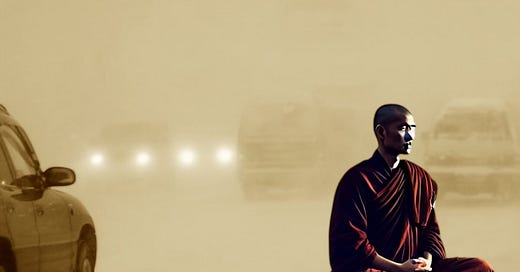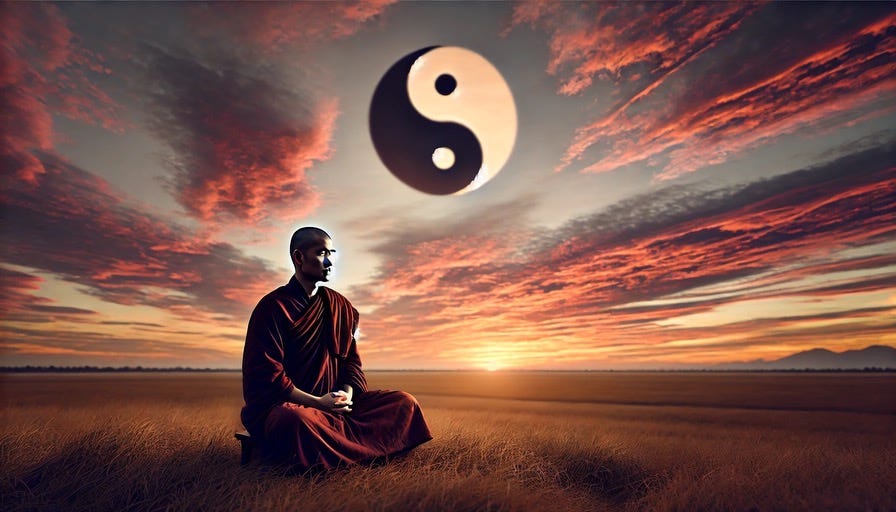The winter of 2001 is seared into my memory like the imprint of frost on a windowpane. One evening, I was on my way from Reno to Carson City, the latter where I had just moved, when a snowstorm hit—a furious whiteout of snow that devoured the valley in every direction.
The familiar road disappeared under a thick, shifting blanket of snow, and the horizon dissolved into an indistinct smear of gray. Visibility was nil. My hands clutched the steering wheel of my 1997 Honda Accord, knuckles pale and rigid, as I crept forward, unable to discern where the road ended and the embankments began.
There was no sightline. No markers. No clarity. Only the faint sensation of movement beneath the tires and the storm’s relentless howl battering my car. It was as if I was driving into the void. And yet, in that moment of sheer disorientation, something remarkable happened.
I let go of my frantic efforts to “see” and instead surrendered to instinct. My mind quieted, my body relaxed, and I allowed myself to feel the road—not with my eyes, but with my gut. Faith, raw and unpolished, carried me through that night.
Fast forward to today, 2024, and I find myself on another kind of road, equally obscured and unpredictable. The world feels like it’s in perpetual motion, shifting beneath our collective feet like tectonic plates grinding against one another.
Economic uncertainty, political upheaval, and the endless search for safe spaces has created a future that’s hazy and fraught. Decisions press on me like the weight of that winter storm — where to live, how to sustain financial security, and how to navigate the labyrinth of change without losing my footing.
The Taoists have a word for this path which is Tao or “The Way.” But “The Way” is not a fixed, linear trail with clear signs and guarantees. It is fluid, intuitive, and often concealed by life’s storms.
Lao Tzu’s Tao Te Ching reminds us, “A good traveler has no fixed plans and is not intent on arriving.” The destination isn’t the point; the journey is. And sometimes, the journey demands that we abandon the need to see every twist and turn ahead and instead learn to trust the invisible hand of the Tao guiding us forward.
Similarly, the Bhagavad Gita offers wisdom for moments when the road ahead seems shrouded in uncertainty. Arjuna, standing on the battlefield of his own life, paralyzed by doubt, is reminded by Krishna to take action—not because the outcome is guaranteed, but because action itself is a form of faith.
“You have the right to perform your duty,” Krishna says, “but not to the fruits of your action.” When the road is unclear, we drive forward not because we are certain of where it will lead but because movement itself aligns us with a greater rhythm.
Reflecting on these teachings, I offer three pieces of advice for you in navigating your own stormy roads:
☯️ Surrender to the Moment and Keep It Moving
Resistance against uncertainty is like trying to stop the snow from falling—it’s futile and exhausting. Instead, lean into the chaos. Like I did that evening in 2001, allow instinct and faith to carry you when the usual markers are gone. Movement is life while stagnation is paralysis. The Tao reminds us that water, soft and yielding, carves canyons out of stone. Be like water—fluid and persistent.
☯️ Relinquish Attachment to the Outcome
Both the Tao Te Ching and the Bhagavad Gita emphasize the importance of releasing attachment to results. We live in a world obsessed with metrics and goals, but sometimes clarity only emerges in hindsight. Focus on taking the next step—just one—and trust that the way forward will reveal itself as you go. Faith is not about seeing the whole path; it’s about knowing that the path exists, even if it’s hidden.
☯️ Cultivate Inner Guidance
In a world rife with noise—social media, news cycles, and external pressures—our greatest compass is within. Spend time listening to that quiet inner voice, the one that often knows the way before the mind catches up. Meditation, journaling, or simply walking in nature can help you reconnect with this inner wisdom. The Tao is within you — the road you seek is not somewhere “out there.”
Twenty-three years after that harrowing drive, I am reminded that life’s greatest roads are often traveled in the dark. The storms may be fierce, the path obscured, but within each of us is the capacity to navigate, even when we cannot see. The Tao is not a map. Rather it is a way of being, a surrender to the flow of life.
I am still learning to trust the road ahead, still learning to dance with uncertainty. The snowstorm of 2001 taught me that clarity is not a prerequisite for movement, and faith is not the absence of fear—it is the choice to move forward despite it.
So here I stand, in the middle of life’s storm, hands on the wheel, eyes on the horizon, ready to trust the way once more. For while the road may be unclear, The Way is always present. And that, in the end, is enough.
It would warm my heart for you to subscribe today as a paid member supporter.Or I’d be grateful if you’d tip me some coffeehouse love here.
Your contributions are appreciated!
Every bit counts as I strive to deliver high quality feature articles into your inbox on a daily basis.
Never any paywalls, just my raw thoughts that are open to everyone on what it means to be human.






I remember the Northern Nevada white out storms and pogonip from childhood. In late adolescence, coming to terms with many things queerness, leaving Christianity, rethinking my own politics, etc., I would drive into the desert and run into the whiteout. I’ve long realized that it wasn’t about losing myself, but finding my way back to myself, yet the thoughts were vague. Thank you for giving voice to a structure I now can see so clearly.
Thanks for this highly appropriate reminder, Diamond-Michael.